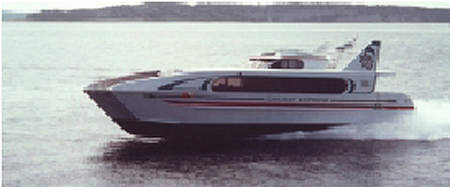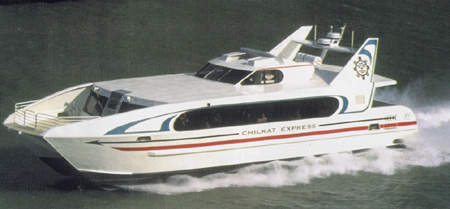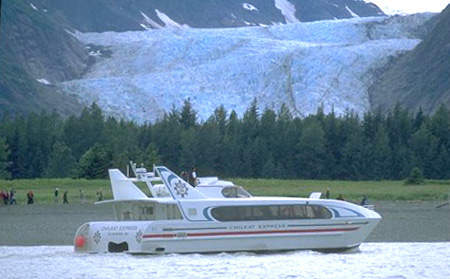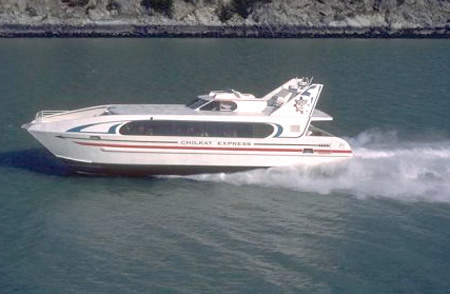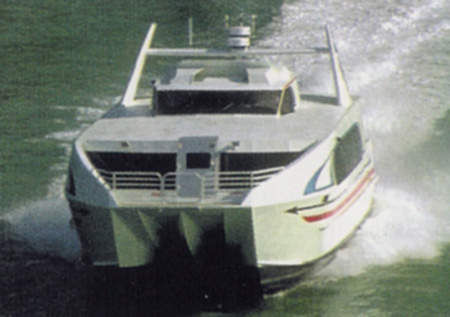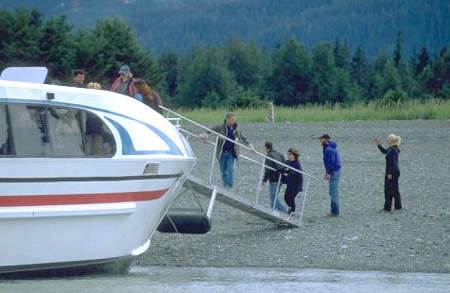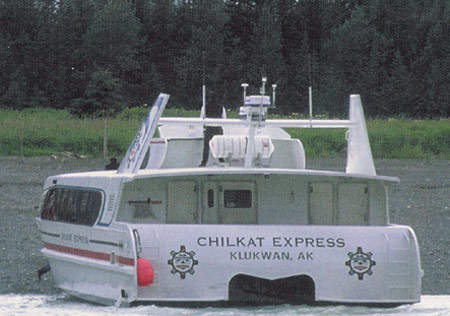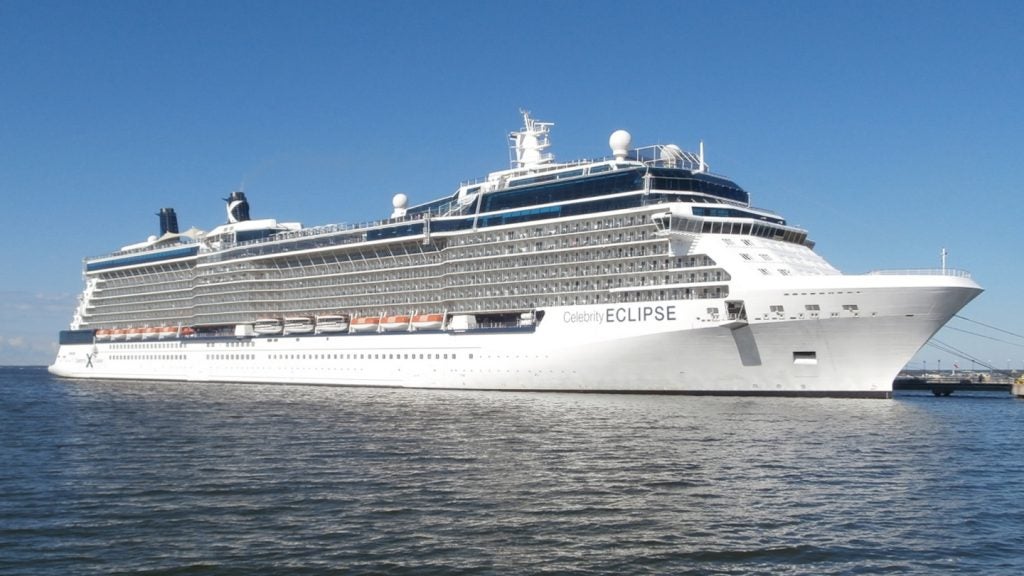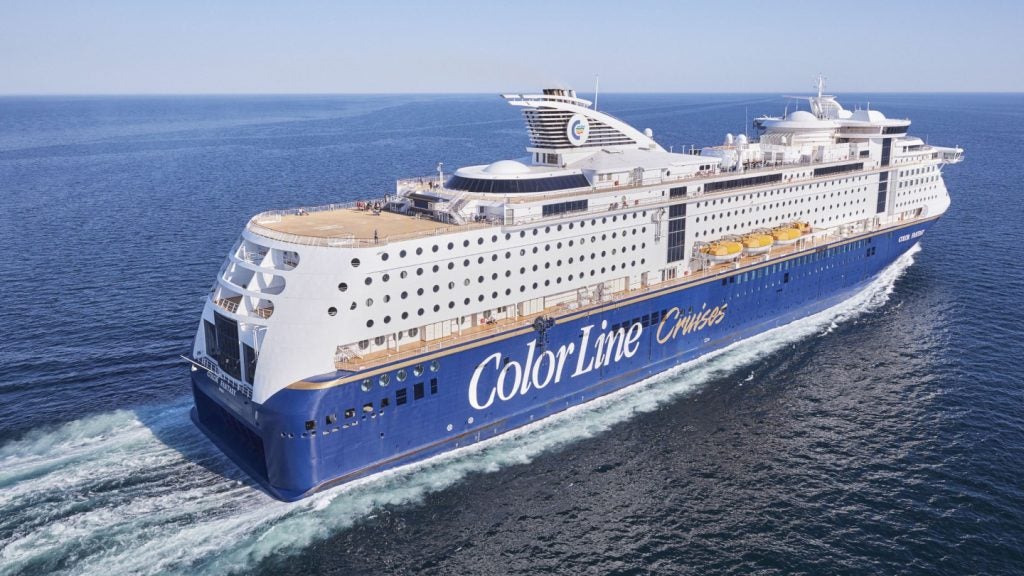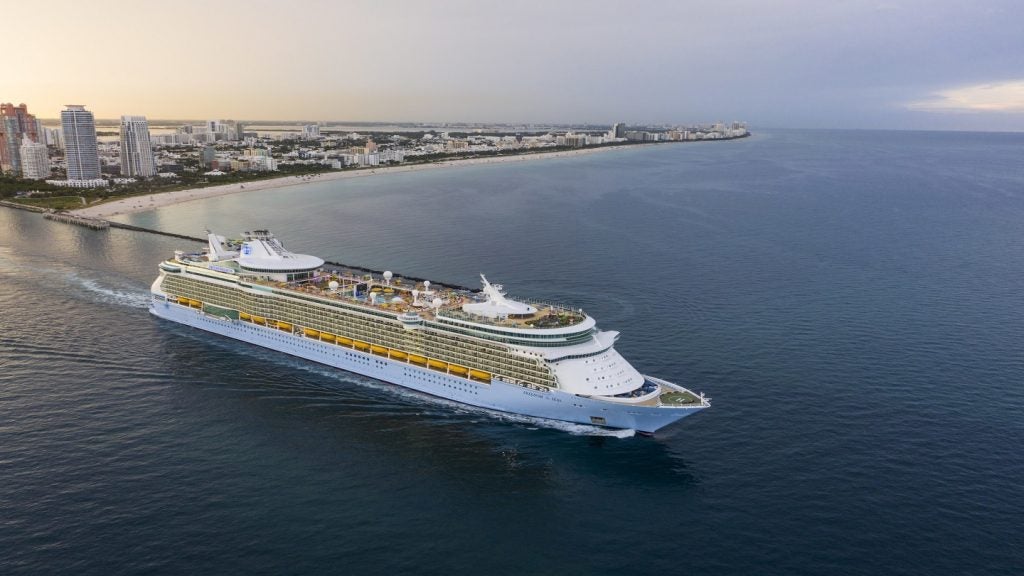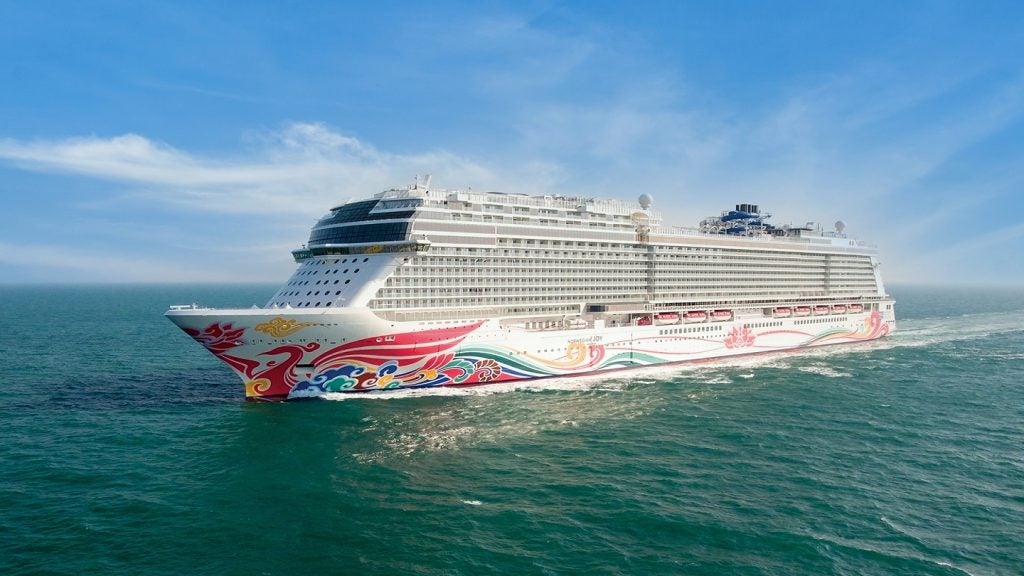The Chilkat Express is a revolutionary ‘foil-assisted’ jet catamaran design that has been developed by the New Zealand-based company Technicraft Design. It was fabricated under license by All American Marine in Bellingham, Washington for the operator, Chilkat Cruises & Tours.
One of the fastest passenger vessels in the United States waters, it competes with six seaplanes, which ply the route between Skagway and Haines in Alaska. The 28nm voyage takes approximately 40mins.
The Chilkat Express is 19m long and has a beam of 6.7m. When at rest, its operating draught is only 0.85m. It is designed to be operated in flat seas with up to 5ft chop and 30 knot winds.
HULL DESIGN
The designers of the Chilkat Express used a semi-planing type catamaran hullform, which features asymmetrical and symmetrical sponson shapes. The asymmetrical mid ships and aft sections are designed to reduce the splash area, enhancing softness of the ride and contributing to the vessel’s economy. The symmetrical form of the bow-sections gives good directional stability, especially in the short swell conditions experienced on the Alaska.
For good performance in rough waters, the hull has a semi-round bilge, however this shape lacks a planing surface. The designers therefore introduced wings or foils between the catamaran hulls to create a slight lift to reduce the draft and resistance.
The hydrofoil spans the tunnel amidships, permanently fixed to the hull above the keels of the sponsons. It is fabricated from aluminium.
The result is a substantial increase in speed, stability and fuel efficiency and running costs – and a substantial reduction of wake. Much of the hull however, remains partly submerged for better sea keeping.
Between the twin hulls features a large opening and a relatively high tunnel, allowing free movement of wind and waves. On the inside of the tunnel are longitudinal chines.
VISIBILITY
In order to minimise wind resistance to achieve a 45 knots service speed, the design incorporates a low frontal area. The main deck, with seating for 63 passengers, is enclosed by large windows to the sides and to the front, giving good visibility for the Alaskan scenery. However, the helm station is raised slightly, which gives the ship’s officers all-round visibility.
The shallow draught allows the vessel to be bow-landed on the beach for dropping off and picking up tourists.
The structural design of Chilkat Express was done in accordance with the Special Service Craft Rules of Lloyd’s Register. The design was approved by the USCG to 46CFR, Subchapter T, Small passenger vessels (under 100gt).
SHIP’S POWER
The Chilkat Express’s power is delivered from four 3406E Caterpillar diesels which each produce 590kW (800hp). To allow them to fit into the narrow side hulls, these are mounted in tandem and offset.
There is also a 13.5kW auxiliary engine, which provides electrical power to two cylindrical 220V fans, which force air into the engine space. This has the effect of cooling the engines and letting them provide maximum power to the Hamilton HJ362 waterjets. These feature good manoeuvrability, allowing the vessel to turn in any direction around a single pivot point and even crab sideways.
The fuel consumption at cruising speed is 120 US gallons per hour. During sea trials in lightship conditions, the vessel attained speeds of over 48 knots. Operational speed is around 43 knots at full load. This can be maintained at only 87% power. The Chilkat Express slows to 30-35 knots in heavy weather.


